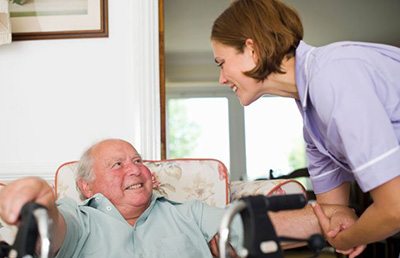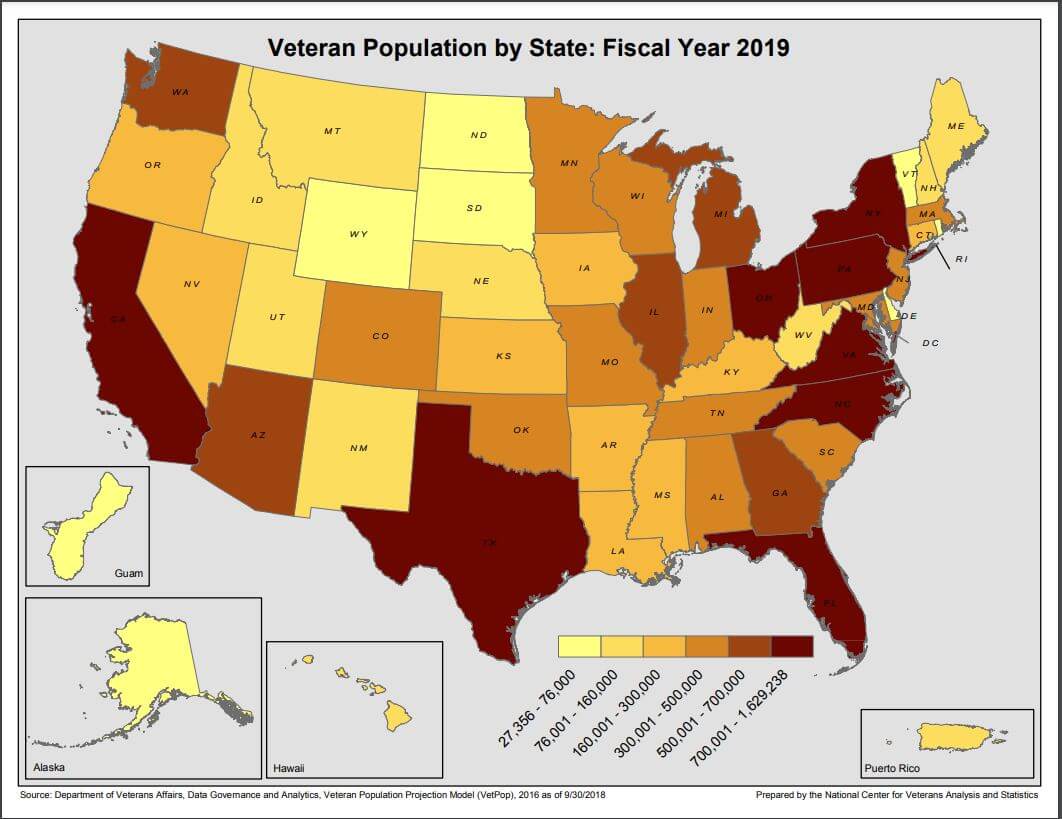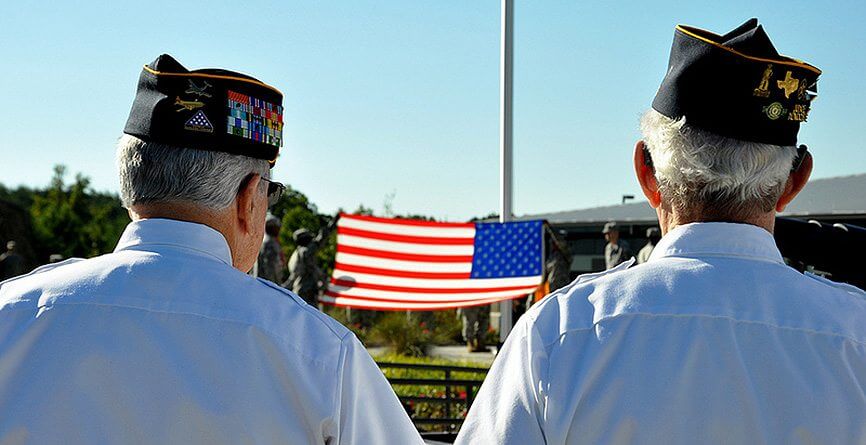Veteran’s Aid & Attendance: The Ultimate Guide (Updated 2024)
The Veterans Aid and Attendance program is a federal program that assists Veterans and their family members to help pay for private home health care and assisted living costs. It is a pension-based program available for veterans and their spouses or widows.
The biggest issue is that many family members, spouses, and veterans are unaware of the program or are unsure how to take advantage of it and start receiving the benefits they deserve.
Though this guide is directed toward Boston Veterans, it can be used by anyone to navigate the murky waters of finding out how to look into these benefits.
Here are some of the things you’ll learn about in this guide. Jump to a section below or scroll down to view them all:
Senior Care Costs
Senior care is expensive. There are some lower-cost solutions that can help, but for most families, there are many out-of-pocket costs associated with senior care services.
Regardless of the type of care your parents receive, non-medical services are almost always considered an out-of-pocket expense with some medical services out of pocket as well.
This includes:
- Adult Day Care
- Traditional Assisted Living
- Private Home Care
- Live-In Nursing Care
- Nursing Homes
- Memory Care Community
In Massachusetts, these are typical costs you can expect from each of these services.
| Service | Cost |
|---|---|
| Adult Day Care | $1,800 / month |
| Assisted Living Facility | $6,000 – $7,000 / month |
| Private Home Care | $35 / hour |
| In-Home Care | $100 / hour |
| Skilled Nursing Facility | $14,000 / month |
| Memory Care Community | $8,000 – $10,000 / month |
These costs are only going to increase as the cost of living and wages increase each year. The cost to care for your parents has never been higher than it is today.
In the past, families took the bulk of the responsibility for caring for an elderly parent, but with both adult children working in demanding jobs, children who need to go to school, sports practices, and other activities, the time is not available anymore.
Additionally, many families have moved away from one another. This makes it impossible to provide any care for an aging parent.
Many Massachusetts retirees either live full-time or part-time out of state. This can leave them isolated from their families if an emergency or decline starts interfering with their ability to live independently.
For these reasons, the senior care industry has seen rapid growth in the last three decades.
What is The Veterans Aid and Attendance Program for Boston Veterans?

The Veterans Aid and Attendance is a pension program run by the federal government and can benefit many families living in the Boston metro-west area.
The program is designed to assist people in spending more money on care for themselves than they have. It is available for both Veterans and the spouse or widow (remarriage makes the spouse or widow ineligible) of the Veteran.
The monetary benefits greatly help families and individuals, including live-in care, senior nutrition, and stroke care. The program can assist someone with It offers over $2,000 a month for care, but this all depends on the recipient.
A Veteran alone is eligible for up to $1,881 per month in reimbursement
A widow is eligible for up to $1,209 in reimbursement
A Veteran and their spouse receiving benefits together are eligible for up to $2,230 per month in reimbursement.
A sick spouse is eligible for up to $1,360 per month
This program can assist families who are spending a lot of money on care for themselves or a loved one.
The Veterans Aid and Attendance covers both types of home care providers: live-in care and assisted living facilities. Find out which type of assisted living service is right for you.
Veterans in Massachusetts:
Total: 379,772
Wartime Veterans: 572,382
Gulf War: 86,393
Vietnam Era: 125,737
Korean Conflict: 42,832
World War II: 26,010
Peacetime: 105,816
Female: 26,151
Male: 353,621
Veteran Population as of 7/09/2021.
The amount of veterans in Massachusetts. Find out about your state’s statistics.
Eligibility for Veterans Aid and Attendance Program
Service in the Military
The requirements for service are a minimum of 90 days served with 1 day during war time effort. This does not mean the Veteran needed to have “boots on the ground,” but must have been active duty during a war.
War or Conflict
WWII: 12/7/1941 to 12/31/1946
Korean Conflict: 6/27/1950 to 1/31/1955
Vietnam Era: 8/5/1964 to 5/7/1975; for Veterans who served “in country” before 8/5/1664, 2/28/1961 to 5/7/1975 is applicable.
Gulf War: At least 24 months, 8/2/1990 until a date to be set by law or Presidential Proclamation.
Asset Limitations
The asset limitation means a person or couple cannot have a net worth over a certain dollar amount. This amount does not include the worth of a house but the “countable” assets that an individual owns.
The maximum amount of assets a single person could have is $40,000.
It would be double for a couple receiving private home health care, at $80,000.
Unlike Medicaid, there is no “look back period” for the Veterans Aid and Attendance Program. So it is possible to put your money into a trust through an estate planner and still qualify for this benefit.
Medical Qualifications
The Veteran requires the aid of another person to perform personal functions required in everyday living, such as bathing, feeding, dressing, attending to the wants of nature, adjusting prosthetic devices, or protecting himself/herself from the hazards of his/her daily environment, * OR, The Veteran is bedridden, in that his/her disability or disabilities requires that he/she remain in bed apart from any prescribed course of convalescence or treatment, OR, The Veteran is a patient in a nursing home due to mental or physical incapacity, OR, The Veteran is blind, or so nearly blind as to have corrected visual acuity of 5/200 or less, in both eyes, and concentric contraction of the visual field to 5 degrees or less. *If the Veteran or their spouse/widow is not currently receiving care from home care providers, that does not disqualify them. They can start using the care and file, claiming that moving forward, they are using this care.
Net Negative Income
The net negative income is something that many families have trouble understanding. It can be a big barrier to overcome.
The net negative income means the individuals or families must be spending more on care for themselves than they have coming in through their income.
So if a Veteran’s income is $2,000 dollars per month, they must be spending over $2,000 dollars on care for themselves to be eligible for this program.
Specific long-term care expenses qualify to lower a person or couple’s net income. These are monthly recurring expenses like:
Cost of Community (assisted living/nursing home)
Medicare “B”
Spouses Medicare “B” (for couples)
Prescription drugs
Supplemental health insurance
If a senior has a monthly income over their cost of care, then they can still get reimbursements but it is on a sliding scale. For example:
A single Veteran is looking to take advantage of Veterans Aid and Attendance and is looking for their $1,732 per month of reimbursable care. If their net income is $2,000 a month, and their cost of care is only $1,900 per month, that Veteran is $100 from reviving the full reimbursement. The Veterans is still eligible for reimbursement just not the full amount. It would be the full reimbursement less the remaining net assets.
$1,732 – $100 net positive left over = $1,632 in reimbursement per month.
These deductions can add up to thousands of dollars per month when added with home care costs and make a person or couple eligible for this program.
Expedite The Application
An application can take many months and a year to be accepted or denied. If denied, you are back to fixing the error, resending the application, and waiting all over again. To expedite the process, contacting your senator and state representative is recommended.
Unfortunately, the squeaky wheel gets the oil in this case but is worth it to get an answer within a few months rather than over a year. So send emails, letters, and calls. Make sure your application becomes a priority.
Speed Up The Process
One way to accelerate the application process is by contacting local representatives in congress. State representatives and senators are known to expedite the process for families in crisis and needing help.
The government is a big machine, full of red tape, bottlenecks, and hurdles. Any help you can receive from someone who can expedite your application should be welcomed with open arms.
We had a client paying out of pocket for services while waiting for their parent’s application to be processed. Months went by without hearing about the status of the application. Finally, the family contacted Massachusetts senator Ed Markey’s office, which was able to expedite the application.

Many Veterans do not even understand the VA benefits and services they are entitled to.
Drawbacks
There are a few drawbacks when it comes to the Veterans Aid and Attendance program.
Asset Limitations – Some families have too much in assets for to be eligible for this program. As mentioned before, we can help families whose assets are about the $40,000 limit, but for those with much more money saved, it is best to use their money for their long-term care.
Reimbursement – The Veterans Aid and Attendance program is a retroactive payment program. So while you are waiting to get reimbursed for your care, you must pay for that care out of pocket. Many families who need this care, cannot wait for up to a year to be reimbursed while paying hundreds if not thousands of dollars per month up front.
Net Negative Income – This can become a problem for families. This program is meant for people who need help, not for the wealthy or well-to-do. There are issues with this because many families that qualify for the program cannot afford the upfront cost even though they will be reimbursed.
Waiting Period – It can take 4 – 16 months to be accepted into the program. There are no rules to determine how long acceptance will take. If two identical applications are handed in, one could take much longer than the other to be accepted with no explanation.
Application – The application can be long and cumbersome. Help is generally needed when filling out the forms. If something is incorrect on the form it will be sent back and need to be fixed. The time between initially sending the application in and then getting it back needing corrections may take months.


Sticking Point
The most difficult part of the application is the need for net negative income and the waiting period for the application to be accepted.
How is one supposed to wait for up to a year for an application to be processed if they don’t have the money to pay for desperately needed services? Especially when you are expected to be in a net-negative situation by utilizing the services you need. Qualification is dependent on seniors spending more money on care than what is coming in to receive the full benefit of the Aid and Attendance program.
Many families find it difficult to wait for their applications to be accepted, so they abandon the process. They don’t have the funds to bridge the gap, even though the payments will be retroactive from the date the application is received.
Bridge The Gap
One suggestion for bridging the service gap is looking into short-term loans for care. These loans apply to all types of 24-hour care for the elderly in their own home.
The best recommendation would be to inquire about a reverse mortgage on your parent’s home.
These mortgages resemble a line of credit that provides up to 80% of the home’s value. Families can use the credit line as needed and pay it back later.
These types of loans would be perfect for someone looking to bridge the gap between the application process and the approval, where a lump sum check would be sent for retroactive payment.
Reverse mortgages have become popular over the last decade as seniors find little cash but a huge amount of equity tied to their homes.
Houses they bought in 1950 for $50,000 are now worth close to $1,000,000. With reverse mortgages, you can utilize the equity while still keeping the ability to age in place.
If you plan to have mom or dad move into a nursing home or assisted living community and leave their primary residence, selling their home makes the most sense to pay for services while waiting for the application process.
Still, if you wish to keep the home in the family, a reverse mortgage is still a popular option to take equity out of the home while keeping the house for the family’s adult children.
The other option to bridge the gap is to utilize a home-equity line of credit on your personal property. Many homeowners have these LOCs as a safety net in case big-ticket items in the house need repair or replacement.
You can pay for the cost of home care using a HELOC and then pay yourself back once the reimbursement check arrives.
Is the Veterans Aid and Attendance Program Right For You?
Please consider the number of assets a person has and look at their net income monthly. This step should determine if a Massachusetts veteran or spouse/widow is eligible. This benefit can offset the costs of home care nursing services, so if it is something that a parent or spouse needs and you are eligible for, you must move forward with the process. We have an asset accounting sheet you can download at the top and bottom of this article. You can use it to determine your income and assets.
Some families are eligible for the program but decide not to pursue it due to circumstances. Those on hospice, suffering from stroke or dementia, or looking to be placed into long-term care may still use the aid and attendance program, just not for home care services.

Enrollment and usage statistics and why Veterans do not apply.
How to Apply to the Veterans Aid and Attendance

If you decide to do it on your own, by all means. You can fill out the forms and get things ready so that you can be accepted and reimbursed.
- Here is the form you will need to request military records.
- Here is the form for applying as a Veteran.
- Here is the form for applying as a surviving spouse.
- Here is the Nursing Home Status Statement.
Also, a great step-by-step form to download is for surviving spouses that help walk you through each question on this form (we have no idea why there is not one for the Veteran’s form)
A great resource at veteranaid.org can help families understand more about this process. That way, you can use it as a resource to understand how you should be answering each question on the application.
Ebenefits.gov can help you apply online.
We recommend getting help filling out this application. By answering questions incorrectly, you can be denied benefits and must correct the application and then send it in again.
Finally, it is illegal for someone to charge you to fill this application out. So if someone offers 100% acceptance and wants to charge you to file, please know that they are breaking the law.
To expedite the process and get accepted faster, contact your local state senator and ask for your case to be expedited.
Documents You Will Need
Discharge/Separation Papers (DD-214). If you need to request military records, you can either fill out a standard form or, you can visit this link. Full instructions on how to request military records is listed on that site.
Copy of Marriage Certificate and all marital information.
Copy of the Death Certificate (surviving spouses only).
Copy of current Social Security Award Letter (the letter that Social Security sends at the beginning of the year stating what your monthly amount will be for the following year).
Net Worth information, including bank accounts, CDs, Trusts, Stocks, Bonds, Annuities, etc.
Proof of all income from pensions, retirement, interest income from investments, annuities, etc.
If you are a court-appointed guardian of the veteran or surviving spouse, a certified copy of the court order of the appointment is required.
Proof of insurance premiums, medications, medical bills or any other medical expenses that are not reimbursed by insurance, Medicare, or Medicaid.
Physician statement of need that includes current diagnosis, medical status, prognosis, name and address, ability to care for self, ability to travel unattended, etc. If you are a veteran in a nursing home, or a family member of a veteran in a nursing home, you can use this form as a certification of that status.
Banking information for Direct Deposit of A&A monthly payments (include a voided check).
Employment history (does not apply if you are over 65).
List of all doctors and hospitals visited in the last year.
Final Notes about Veterans Aid and Attendance
When looking into the Veterans Aid and Attendance program please get the help you may need. You can ask your elder law attorney, estate planner, home care agency, assisted living facility, or your local Veterans agency for assistance on where to go and what to do. Generally they will know where you should turn.
If you are already receiving a VA non-service connected pension, you can not receive service-connected compensation as well. But applying to the Veterans Aid and Attendance program is still worth while, because the VA will pay you which ever is the greater payment.
Remember, no one should bill you for filling out an application, it is illegal.

